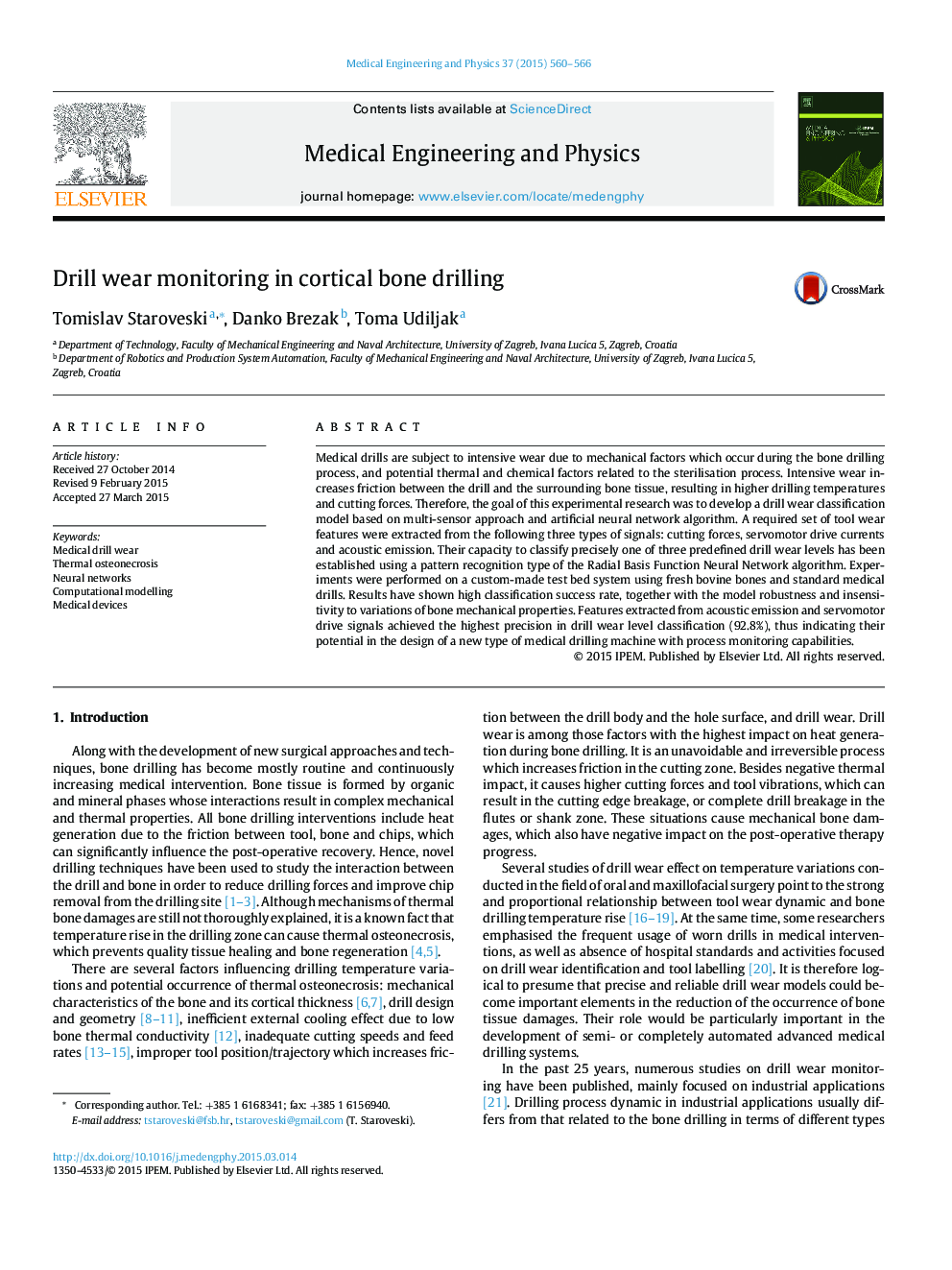| Article ID | Journal | Published Year | Pages | File Type |
|---|---|---|---|---|
| 875747 | Medical Engineering & Physics | 2015 | 7 Pages |
•Multi-sensor medical drill wear monitoring system was experimentally analysed.•Drill wear increases drilling temperature and cutting forces.•The best combination of drill wear features is proposed.•Features insensitive to variations in bone mechanical properties are established.
Medical drills are subject to intensive wear due to mechanical factors which occur during the bone drilling process, and potential thermal and chemical factors related to the sterilisation process. Intensive wear increases friction between the drill and the surrounding bone tissue, resulting in higher drilling temperatures and cutting forces. Therefore, the goal of this experimental research was to develop a drill wear classification model based on multi-sensor approach and artificial neural network algorithm. A required set of tool wear features were extracted from the following three types of signals: cutting forces, servomotor drive currents and acoustic emission. Their capacity to classify precisely one of three predefined drill wear levels has been established using a pattern recognition type of the Radial Basis Function Neural Network algorithm. Experiments were performed on a custom-made test bed system using fresh bovine bones and standard medical drills. Results have shown high classification success rate, together with the model robustness and insensitivity to variations of bone mechanical properties. Features extracted from acoustic emission and servomotor drive signals achieved the highest precision in drill wear level classification (92.8%), thus indicating their potential in the design of a new type of medical drilling machine with process monitoring capabilities.
